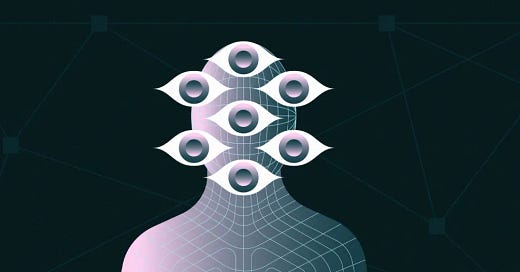Beyond the Eyes: Differentiating Real from Deepfake
In the deepfake era, AI-generated images have become rampant, making it increasingly challenging to identify authentic human images. You might have been fooled more than once, and as technology advances, the deception will only get more sophisticated. While platforms like CloakAI offer ways to protect your assets from AI training and replication, there are also discernible tells for AI-generated content. A fascinating breakthrough from researchers at the University of Hull suggests that our eyes could be the key to distinguishing real from fake.
Reflections Don’t Lie
Researchers, including masters student Adejumoke Owolabi, have discovered that the light reflections in the eyes of deepfakes often don’t align correctly. Unlike real human eyes, where reflections are consistent across both eyeballs, deepfakes fail this physics-based test. The insight was derived using astronomical techniques typically reserved for galaxy analysis. These findings suggest that the secrets of the universe are reflected in each one of us, highlighting what makes us uniquely human.
Astronomical Techniques Applied to Deepfakes
Professor Kevin Pimbblet explains that by applying methods used to measure galaxy shapes, they detected inconsistencies in the reflections of deepfake images. The Gini coefficient, a measure of light distribution, played a crucial role in these findings. By comparing the morphological features of reflections in the left and right eyeballs, the team identified notable differences in deepfakes.
Implications and Limitations
As AI-generated images become more realistic, the ability to detect deepfakes is vital for combating misinformation and political manipulation. While the eyes provide a clue, it is not foolproof and can result in false positives and negatives. Here are some additional indicators to provide further clues in the ongoing battle against deepfakes.
Facial Features and Movements
1. Unnatural Eye Movements and Blinking: Real human eyes follow natural patterns and blink at regular intervals. Deepfakes often struggle to replicate these subtle movements accurately, resulting in unnatural eye behavior or a lack of blinking.
2. Facial Expressions and Symmetry: Deepfakes can exhibit inconsistent facial expressions. For instance, the skin might appear too smooth or too wrinkled, and facial features like moles or scars may not appear natural. The symmetry of facial features and the consistency of skin texture can also reveal discrepancies. Humans are imperfect, AI struggles at variability.
3. Lip Sync and Speech Patterns: Lip movements that don't match the audio perfectly are a tell-tale sign of deepfake videos. Since deepfakes often rely on lip-syncing technology, any delay or mismatch between the lips and the audio can indicate manipulation.
4. Facial Hair and Shadows: Deepfakes may add or remove facial hair, but often fail to make it look natural. Similarly, inconsistencies in shadows, particularly around the eyes and glasses, can betray a deepfake. The physics of light reflection is hard to replicate perfectly in synthetic images. Zoom in if you must but the subtle differences are present.
Technical Artifacts
1. Glitches and Distortions: Look for visual artifacts like blurring, pixelation, or unnatural edges around facial features. These artifacts can occur due to the limitations of the deepfake generation process.
2. Background Anomalies: Backgrounds in deepfake images might appear strange or inconsistent. For example, there might be unnatural merging of the subject with the background, or the background might exhibit unusual distortions.
3. Image Resolution and Quality: Differences in image resolution between the face and the surrounding environment can also indicate a deepfake. Deepfakes often have high-quality faces but lower-quality backgrounds, as the algorithm focuses more on the face.
Behavioral Cues
1. Inconsistent Behavior: In videos, look for inconsistencies in behavior that seem unnatural. Inconsistencies could include awkward or exaggerated movements that don't match the setting or context of the video.
2. Incongruent Emotions: Emotions expressed might not match the context or the rest of the body language. For example, a person might smile with their mouth but not with their eyes, creating a disjointed expression.
Tools and Techniques
Various tools and techniques are being developed to help detect deepfakes. Organizations and researchers are creating algorithms that analyze these subtle inconsistencies and provide a probability score indicating whether the media is real or fake. But get educated! Participating in educational resources can help individuals learn to identify deepfakes through practice and exposure to both real and synthetic media.
While no single method is foolproof, combining these indicators can significantly improve our ability to spot deepfakes. When all else fails, assume it’s fake till you can verify otherwise. AI until proven otherwise is the new status quo. ✌🏾
#EyesAgainstDeepfakes #AI #Deepfakes #TechBreakthrough #DigitalIntegrity #Misinformation #AIvsHuman #FutureTech




